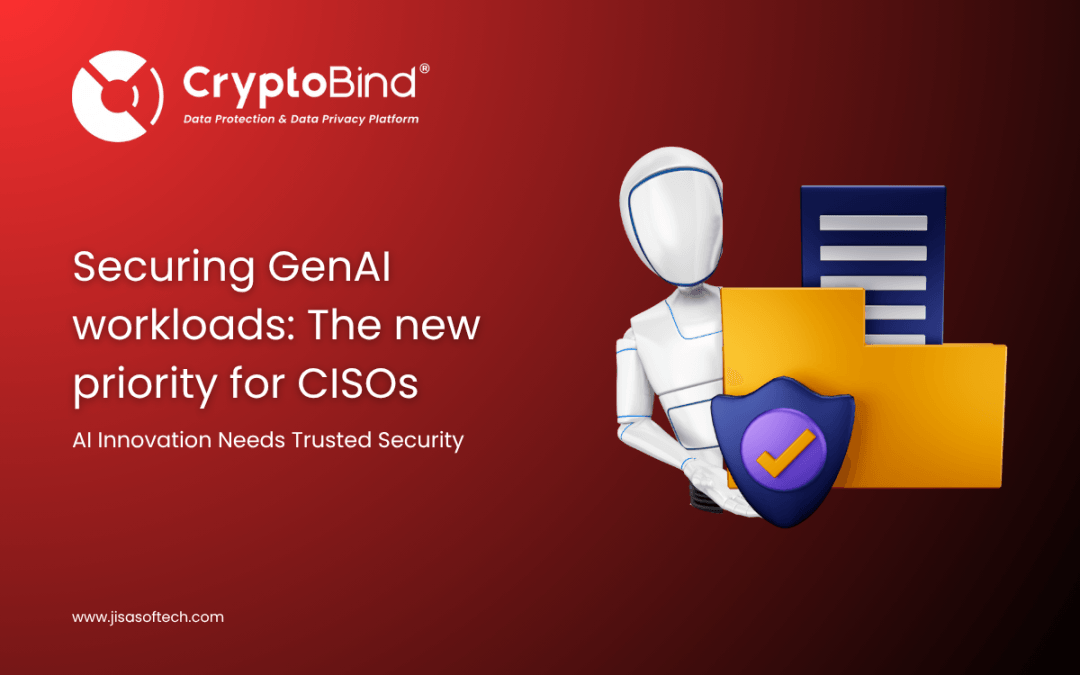Generative AI (GenAI) is getting ahead of enterprises and changing them faster than even some of the most revolutionary technologies. GenAI has the potential to deliver scale in operations and the ability to be creative: automating the creation of marketing content, expanding software-development capability, reimagining customer service, and analysis of risks. Yet, beneath this promise lies a stark new reality: GenAI workloads are introducing complex security risks that CISOs can no longer ignore.
The old concept of enterprise security perimeter has already become divided due to hybrid cloud, remote workforce, and SaaS sprawl. The risk that AI introduces is novel, probabilistic, and opaque and it may occur in the form of third-party models. To Chief Information Security Officers, securing GenAI workloads is no longer a downstream IT problem. It has become a board-level priority.
Understanding the GenAI Attack Surface
Securing GenAI workloads is not simply about protecting AI models. It encompasses:
- Training Data Integrity: Sensitive or biased data used for model training can lead to compromised outputs or regulatory violations.
- Prompt Injection Attacks: Malicious actors can manipulate input prompts to bypass filters or trigger unintended behaviors.
- Model Exploits: Threats like model inversion and membership inference can extract sensitive training data from GenAI models.
- API Abuse and Shadow AI: Unsanctioned use of third-party GenAI tools by employees (Shadow AI) can introduce significant data exfiltration risks.
- Legal & Compliance Risk: GenAI outputs can infringe on IP, breach data residency laws, or violate data protection regulations like GDPR or India’s DPDP Act.
Real-World Scenarios: When GenAI Goes Wrong
1. Healthcare Chatbot Leaks PHI
One of the largest hospitals has still implemented a GenAI chat to answer patients. Even though the model was created with the best intentions, it was not refined to store Protected Health Information (PHI) safely. Patients names, diagnoses, and appointment details could be retrieved by particular injection attack, which was done promptly. The breach triggered an investigation by regulators and severely damaged patient trust.
2. Financial Firm’s Shadow AI Incident
A mid-sized financial services firm discovered that multiple analysts were using consumer-grade GenAI tools to summarize internal reports. Such tools were tracing inputs such sensitive market forecasts and M&A information so that they could be used to train the next generation of their freely available model. The company was audited on compliance and one of the senior executives was made to resign.
3. Retail Brand’s Hallucinated Ad Copy
GenAI was used by an e-commerce firm to create marketing materials. Bad governance resulted in the hallucination of product features and overemphasis of discounting. Under false advertising, customers placed complaints and the brand suffered reputational risk and exposure to legal problems.
Rethinking Security: The CISO’s New Mandate
The CISO’s role in a GenAI-driven enterprise isn’t just about building barriers, it’s about embedding secure innovation into the organization’s DNA.
1. Shift from Reactive to Preventive Governance
CISOs must partner with data science teams early in the lifecycle to ensure:
- Dataset sanitization
- Model explainability
- Guardrails against prompt manipulation
2. Secure Prompt Engineering & Role-Based AI Access
Define clear policies for who can access GenAI models, with what data, and for what purpose. Implement tiered access control and audit logging.
3. Zero Trust for AI Workloads
Apply Zero Trust principles to isolate model environments, secure APIs, and monitor model inference pipelines for anomalies.
4. Build a GenAI Bill of Materials (AI BOM)
Record data sources, model dependencies, fine-tuning logic, and vendor risk posture to improve transparency and audit-readiness.
Securing GenAI Workloads: What Forward-Looking CISOs Are Prioritizing
As CISOs lean into the GenAI wave, specialized security measures are becoming essential to managing the emerging threat landscape. Modern security and data protection tools are now tailored to safeguard GenAI deployments through:
- HSM & Key Management for GenAI:
With GenAI models increasingly processing sensitive data, encrypted handling and strong key management are no longer optional. Cloud-controlled, meltable HSM solutions offer enterprise-grade compliance and secure key lifecycle management. - PrivacyVault for Sensitive Data:
Whether working with PII, PHI, or PCI data, purpose-built privacy vaults protect sensitive information without compromising model functionality, enabling GenAI models to learn and respond without data exposure. - LLM Privacy API:
Real-time data masking, prompt filtering, and output validation help prevent leakage and hallucination. Acting as a privacy-focused middleware between users and GenAI systems, these APIs reduce risk while enabling productive AI interactions. - Regulatory-Grade Compliance Tools:
From India’s DPDP Act to industry-specific data residency regulations, CISOs can rely on integrated compliance tooling to meet evolving regulatory expectations with confidence.
Security must now operate across the data, model, and access layers, embedding controls at every step to ensure responsible innovation and reduce the attack surface of GenAI deployments.
Compliance Isn’t Optional Anymore
Laws such as the EU AI Act, India DPDP Act, and industry-related rules have arrived quickly to redefine the legal context of AI application. CISOs will have to embrace frameworks that help combine both security and compliance so that they are explainable, have consent, data lineage, and are audit ready.
Culture is the Foundation
Technology is only part of the answer. Enterprises must:
- Train employees on GenAI risks
- Define acceptable usage policies
- Establish cross-functional governance councils
- Promote a culture of AI ethics and transparency
Final Thought: CISOs as Enablers of Trust
GenAI workload security is not a technical requirement; it is a strategic opportunity that requires work. Organizations which will succeed in the GenAI era will be the ones who integrate security, privacy and trust into the DNA of their AI innovation.

